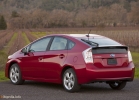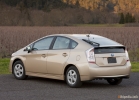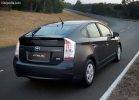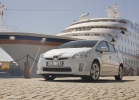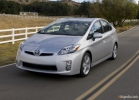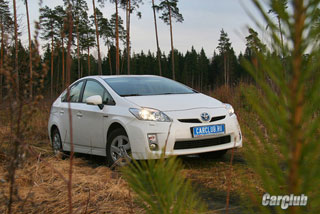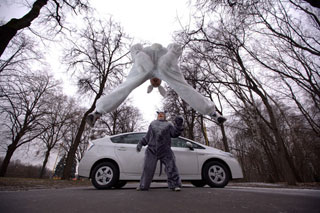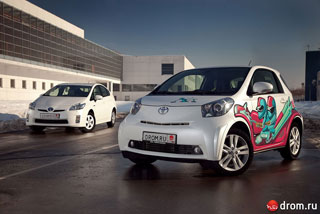Toyota Prius test drive since 2009 hatchback
Comparison Toyota Prius of the second and third generations. Take or not take a new hybrid?
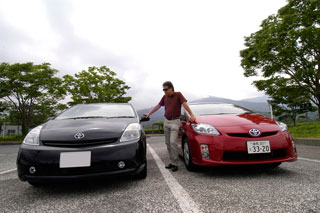 How many words have already been said about Toyota Prius, but everyone always has something to add. The first priest in the back of the NHW10 is about to hit 12 years, he was launched on sale in October 1997. From that distant day in Japan, and all around the world, discussions around the so far have not yet become familiar to a hybrid car have not subside. Meanwhile, according to the end of 2008, 1.2 million copies of the Japanese miracle were sold around the world.
How many words have already been said about Toyota Prius, but everyone always has something to add. The first priest in the back of the NHW10 is about to hit 12 years, he was launched on sale in October 1997. From that distant day in Japan, and all around the world, discussions around the so far have not yet become familiar to a hybrid car have not subside. Meanwhile, according to the end of 2008, 1.2 million copies of the Japanese miracle were sold around the world. In 2003, I decided to purchase a second -generation prose (Prius II in the NHW20 body), which appeared in stores in September of that year. Of course, there were fluctuations, but I reasoned very simply: the 21st century in the yard, you need to be progressive, and progress is a hybrid. And everything that a person expects from a hybrid, he will find in Prius II. Isn't it logical? Almost six years have passed since then, during this time I have sought out all of Japan on my prose, and now almost 60 thousand kilometers have run on the odometer.
And so, the world is a completely updated third -generation prose Toyota Prius III, the ZVW30 body. What can you say, the emotions are off, the salivary glands work in an enhanced mode ... As of May 18, 2009 (a month before the start of sales), the number of applications for the purchase of a new car reached 180 thousand. Thanks to the introduction of tax benefits and material incentives for owners of eco-mobiles, the popularity of the machine is growing steadily. But personally, I can’t decide if I need this Prius III.
It seems that all publications have already spoke about the new car, everyone shared his good arguments for and against the world. However, I noticed that most authors still look at the priest, as it were, and there are practically no critical reviews with an emphasis on a rapidly changing modern life.
The editorial office of CarView.co.jp interested my opinion as the winner of the previous generation Prius, and I was given an unusual task: to arrange a duel of new and old Proves, and to report the progress and results of the match in the form of an article. To write this article, I not only rode on the Prieses, but also visited excursions in the Toyota plant.
A small excursion into the past
The beginning of the story of Toyota Prius was laid in 1993, when Aiji Toyoda then chairman of Toyota, now the 95-year-old decision on the need to create a car with a hybrid installation. Can we endlessly produce traditional cars? Will Toyota be able to survive in the 21st century with this approach? The venerable chairman was a bit to change the eras and acted in accordance with his forebodings.
You can dig even deeper. In 1983, as president of Toyota, Mr. Toeoda announced the launch of the international project Lexus LS. It was this luxury car that was called upon to pave the path to the big world for the Toyota brand. And without this path, few would probably have learned outside the bonds outside Japan.
In the late eighties, the economy of Japan reached its heyday, but soon the soap bubble burst, and the consequences of the collapse did not pass by Toyota, but it was hybrid cars that became a ray of light for the corporation in the then chaos that symbolized the entry into a new life.
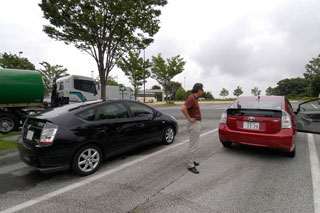 Prius I was brought to the market much earlier than planned. In December 1997, COP-3 was held in Kyoto (the third conference of the parties to the UN Framework Convention on Climate Change), and the next year, Prius became the official car of the Winter Olympic Games in Nagano. For the company, it was to some extent a risk, but the carism of the car worked one hundred percent, and there is no doubt that the risk was justified, because today Prius II has become a real world hit.
Prius I was brought to the market much earlier than planned. In December 1997, COP-3 was held in Kyoto (the third conference of the parties to the UN Framework Convention on Climate Change), and the next year, Prius became the official car of the Winter Olympic Games in Nagano. For the company, it was to some extent a risk, but the carism of the car worked one hundred percent, and there is no doubt that the risk was justified, because today Prius II has become a real world hit. A recognizable eco-mobile
Prius III can be considered as an upgrade (improvement) Prius II. When creating it, basically, the same elements were used, although there are also plenty of altitude.
At one time, having replaced the first priest, Prius II received an improved hybrid system (Ths-II instead of Ths), and from the sedan turned into a 5-door hatchback. Compared to such metamorphoses, the current generational change looks rather modest. Someone will say the Prius was mothballed. If the eye is not hinted, you can’t distinguish a new car from Prius II. The body has become wider 20 mm and 15 mm longer, in general, the outlines remained the same. On the one hand, there is a share of designer lack of freedom in this, on the other, one can judge this way: the developers decided not to move far from a cult triangular silhouette that has become a symbol of an eco-mobile, so that anyone, looking at Prius III, accurately recognized an old acquaintance. The visual image of the Toyota Prius of the second generation provided the car with worldwide recognition, and during the creation of the successor of the legend, the designers faced a difficult task: to maintain the identity of the image, but at the same time bring something new to it. The principle of the energy of simple solutions Vibrant Clarity, proclaimed by designers Toyota, helped to cope with this task.
Pay attention to the contour of the roof of the body. The top of the triangle shifted back, and the front strings of the body pulled 25 mm forward. It became more free in the cabin, aerodynamics improved, proportions were smoothed out. The upper part has an easily recognizable contour of eco-icons. However, what distinguishes the new generation is slightly lower. The front and rear lights are now as if connected by a light touch passing through the entire side of the body. This part, reminiscent of an exquisite porcelain thread, added piquancy to the outlines of the Prius, previously soft and smooth.
Another difference between the new model is small ledges with the front bumper. This is not so much an element of design as a functional nuance, this is done for better control of the air stream. The third -generation PRIUS lobed resistance coefficient CX \u003d 0.25, which is 0.01 less than that of Prius II. The merit for this is a small, but still achievement, almost completely belongs to the body designers.
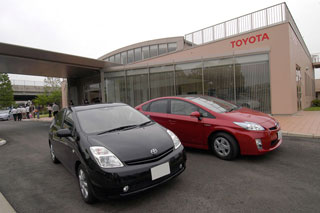 In the cabin of Prius III
In the cabin of Prius III The instrument panel and the oval steering wheel with the Electro ShiftMatic gear switch in the new prose almost literally repeat the ideas of Prius II. But it is worth sitting in the driver’s chair, you understand that something is wrong. In Prius II, the salon is simple and understandable: in sight of the minimum of the necessary information, and the whole secondary is hidden deeper. For example, I usually use a display on the console to control fuel consumption and only occasionally, when necessary, I open the navigator. I don't like it when, while driving, I have an unnecessary picture before my eyes. I also like unpretentious control buttons. Therefore, I consider the complicated interior Prius III a minus. In my prose, the display on the console is located so that it is clearly visible to everyone, including the rear passengers, while Prius III leaves that the world revolves around the driver. The curved dashboard hints at sports, but how appropriate is it here? The layout of the dashboard and the console is very decent: everything is correctly organized and looks stylish, but bulky. There are many buttons, they made them tiny, which for the eyes, of course, was tiring. To manage with a new sensory display, you need to have good coordination of movements. The main power of the interior Prius II is a pure plan that is intuitively understandable to anyone. It’s a pity, but Prius III seems to have come down from this course.
The name of the body brand was replaced by the NHW20 to ZVW30. This reflects the fact that the 1.8-liter series of the ZEL series was replaced by the 1.5-liter engine of the Z series. The engine of a larger volume was used to reduce fuel consumption at high speeds. Sitting behind the wheel, I was impressed by the way the car vigorously starts. The sound of an electric motor is heard from silence: in the EV Start mode, the car moves only on electricity. The electric motor performs two functions: an electric motor and an electric generator. The connection between the gasoline engine and the electric motor provides planetary transmission. The electric motor works evenly, the engine is extinguished during downtime, the fuel is consumed only when necessary.
The structure of the hybrid installation of Ths-II has not fundamentally changed, but it reached a slightly higher level. The power of the electric motor has increased, its operating time has increased, as well as the maximum speed in EV Mode mode, it can reach 55 km/h. Subject to the fully charged battery, about two kilometers you can only drive in electricity. The use of a planetary reducer and a more advanced battery, as well as an increase in voltage (from 500 to 600V) made it possible to increase the efficiency of the entire installation, which not only positively affected the fuel consumption, but also made a more quiet and comfortable ride on Prius III.
At the moment, I drove half of my route along the Tomay motorway. I chose an economical ECO regime, which was somewhat finalized for the new priece. Of course, the Power mode is something more comfortable, but in this mode, the consumption will immediately make itself felt.
Step forward but where?
So, Prius III in many ways a higher level machine than Prius II. The improved power unit is consistent with the impeccable outline of the body. The power of the system is 100 kW (136 hp) against 82 kW (113 hp) on Prius II, that is, 20% more. Usually this is regarded as an improvement, I don’t see anything special in its very growth in power.
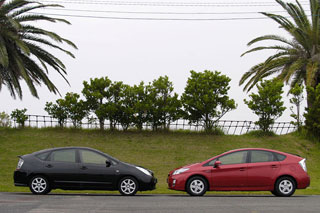 The following points seem more interesting to me. Prius III received an engine with an improved torque moment at high speeds (up to 180 km/h) and at low. As a result, fuel consumption continues to decline. In addition, the problem suffered by the PRIS of the past generation was solved: by supplying the recirculation system for the exhaust gas (EGR) by the cooler, and the engine with an electric tank of the coolant, achieved the power of energy in the cold season.
The following points seem more interesting to me. Prius III received an engine with an improved torque moment at high speeds (up to 180 km/h) and at low. As a result, fuel consumption continues to decline. In addition, the problem suffered by the PRIS of the past generation was solved: by supplying the recirculation system for the exhaust gas (EGR) by the cooler, and the engine with an electric tank of the coolant, achieved the power of energy in the cold season. Which side do not look at, Prius III looks like a serious step forward regarding its predecessor. But I do not think that this step is crucial, given the current Prius status in Japan in general. Take, for example, a typical situation when the driver finds himself in the position of Hamlet: be or not to be? Try to master the rise at a speed of 100 km/h and save on fuel or close your eyes to savings and go like a normal person?
The priest became faster, stronger, but why? In fact, the driver becomes a hostage to the hybrid system. Moving slowly, he begins to feel psychological discomfort. The system forces him to go faster, and in most cases the driver does not realize this. And here the issue of safety arises ...
My route was conditionally divided into five sections. At the moment, on two of them, Prius II showed the best results on consumption than Prius III. For a car that has already gone for the sixth year, the result is very good.
The criteria of the last century are not applicable to Prius
One of the options Prius III is a transparent roof with a built -in sunny battery. The energy of the sun accumulated by the battery is used for the so -called solar ventilation of the salon. The settings of this system can be changed from the remote control, being outside the machine. The whole device added a priest of 20 kg weight. Undoubtedly, this did not affect stability in the best way, but despite this, the car behaves on the road quite balanced. The second priest was distinguished by soft and graceful movements, while the third is characterized by a more stringent, but quiet disposition.
In general, if you evaluate the new Prius according to generally accepted criteria, then it exceeds the second generation model almost everything: more powerful, faster, more controlled and stable, wins in aerodynamics and fuel consumption. But my opinion is this: traditional criteria are not for Prius.
Having increased the power of the hybrid installation, increasing the maximum speed to 180 km/h, reducing fuel consumption to 2.6 liters per 100 km and placing all this in the shell corresponding to new capabilities, the developers helped the car take a step forward regarding the previous ideas about the eco-mobile. But so, so, we again rely on the evaluation system of the last century. What do the power and speed mean in the occurreed age? The question is still open.
Moving on Prius II, I have never had a feeling of dependence on speed. Prius III constantly tapped me to add gas. I don’t know which of these two cars the future, but I definitely choose Prius II, because I am much closer to the principle of a car for a person, and not a person of the car. About ten years ago, I may have chosen the third prose a magnificent, high -quality product, but times have changed and require a radically new solutions.
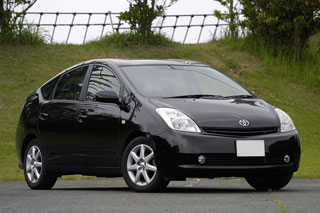
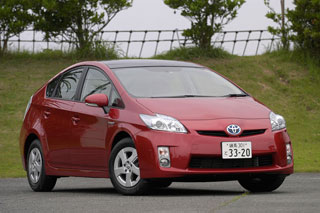
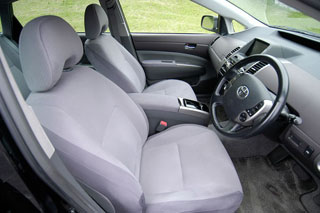
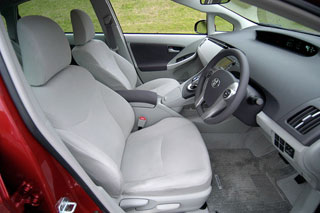
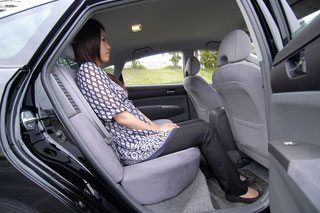
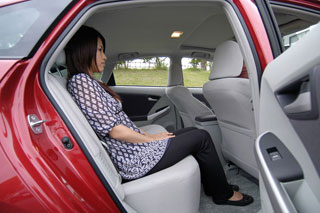
A source: carView.co.jp

